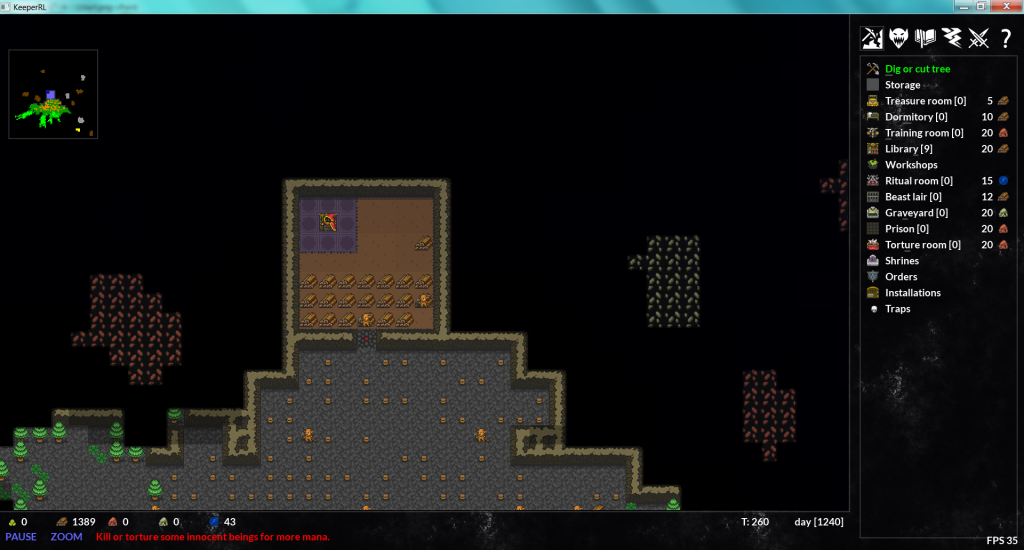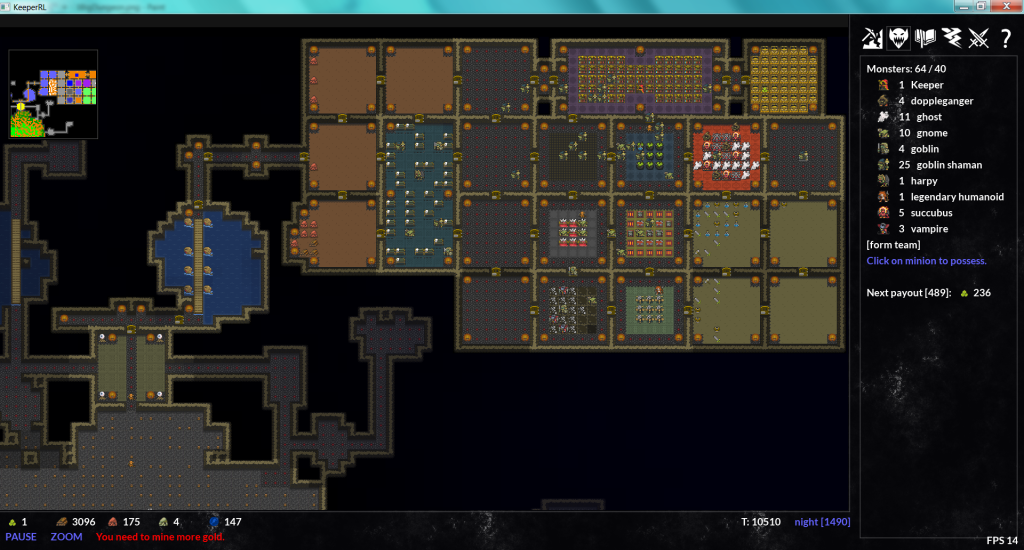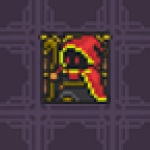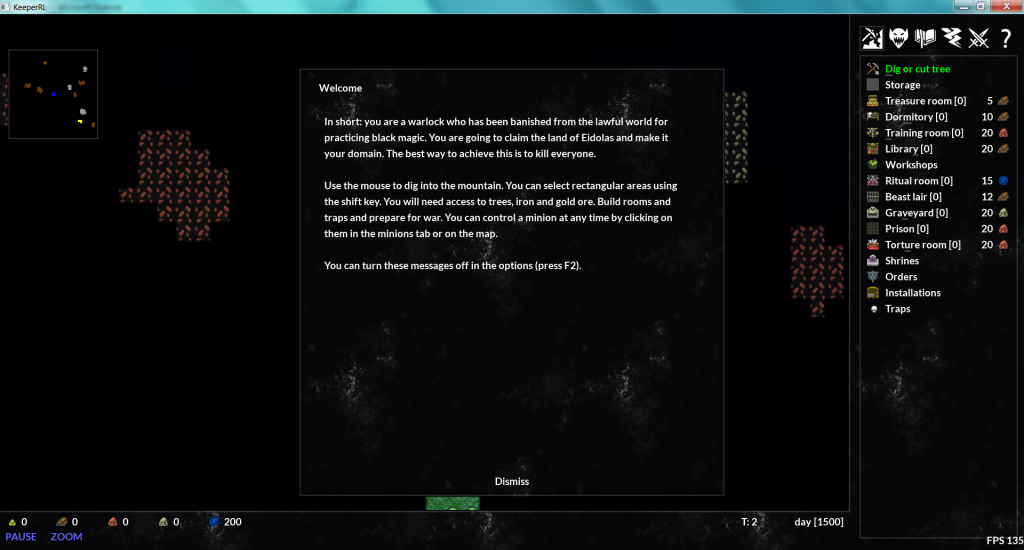The Witchfinder recently took time out of the relentless grind of human suffering and misery that is the role of a McKenzie Friend in the Family Courts. Instead, he did something more cheery and played a pre-release game about indiscriminate slaughter. This is the review.
There have been many attempts to remake Peter Molyneux’s classic Dungeon Keeper. In the original game the player takes the role of a supernatural force of evil, who carves out a vast underground lair. Heroes periodically invade, only to be slain by your horde of evil minions.
Dungeon Keeper was an incredible success, but sadly the series ended after Dungeon Keeper II. Critics and fans were left hungry for new features, especially the ability to go outside and oppress the good people of the land directly.
There have been many attempts to follow up the legacy of Dungeon Keeper, such as Dungeons, Impire and War for the Overworld. All of these have met with mediocre reviews, and whilst the Witchfinder enjoys Impire it simply does not approach the joy of the Dungeon Keeper series. In the Witchfinder’s opinion, the best Dungeon Keeper successor to date is KeeperRL (Keeper Rogue Like), which is why – despite being in alpha – it deserves this review.
The Roguelike genre is typically a single player game with deep gameplay mechanics and a plethora of features but with ascii text graphics, or at most a simple tileset. Most Roguelikes are dungeon crawlers where the player takes the role of an adventurer. Others incorporate management of communities, such as Dwarf Fortress, which lets you build a community of dwarves in a persistent single-player world. In DF you can also play as an adventurer and even visit your own fortress (or its haunted ruins).
KeeperRL is Dungeon Keeper as a Roguelike. In the game, rather than playing the disembodied spirit of the dungeon heart, you play a Warlock exiled from normal society. You are Quite. A. Bit. Upset. about this and decide the best way to get your revenge is to conquer the land. You also decide that the best way to do that is to kill everybody. And this game really means, EVERYBODY.
The game opens with the player, a sinister figure in a red robe, lurking in the wilderness with a small number of imps and no spells or weapons of note. The only use to which you can put your dwindling store of power is to summon a few more imps.
First order of business is to draw out a small area for imps to dig, and also drag-mark some trees to be cut down for lumber. Yes – basically the Dungeon Keeper mechanic in 2D.
It is essential to dig out a small shelter immediately, and to place a resource store and a library (you need a library to recover mana and research new spells and abilities). For the library you need lumber so you set your evil minions to devastate the forest Saruman style …

A small initial shelter with a 3×3 library. The rest of the space is designated for resource storage. Note the swathe of felled trees in front of the entrance. Click for full size.
Once you have a small shelter, you can expand from there. The game basically works like dungeon keeper, only with all the benefits of a Roguelike such as detailed character statistics, spell lists and inventories as well as area specific damage. The game also has a vast outdoors seamlessly integrated into the 2D map, with several towns of humans, elves, dwarves and even lizardmen. Each race has their own town and community to be pitilessly exterminated.
The Witchfinder has been following the development of KeeperRL with great interest and bought into its IndieGogo campaign. Whilst the game is still in Alpha, each iteration has been a playable fun game – a blast to win or lose.
Nevertheless, the game is still in alpha and there are performance, stability and balance issues. Most annoyingly the Witchfinder has lost several saved game files to crashes in the most recent version, Alpha 10. Resource shortages are critical – for example there is barely enough stone to build every room. Evil minions want paying and the amount of gold available is laughably insufficient.
In multiple games, the Witchfinder has literally stolen all the gold in the world, looted cities, destroyed whole peoples and mined every seam and still can only afford a day or so of labour from his peons. (Presumably they are all in Unite). The resourcing is a major issue.
Another problem is balance, where there are several problems. The game has a pantheon of Gods – 6 traditional gods with randomly assigned spheres of responsibility and powers. A 7th is a dragon, which lives near the Keeper and demands worship.
The various deities are jealous. The player can build shrines to them, but annoyingly they send angels to destroy each others’ shrines – a major annoyance as the stone used to build the shrines is all too finite.
The dragon is a major problem, frequently arriving near the start of the game, killing the Keeper and burning down the dungeon. This can be mitigated by a progression flaw. If you research the sorcery options exclusively at the start of the game it is possible to reach the highest level of power almost immediately. Using the full spell list it is literally possible to kill the dragon bare handed, then rob his gold and epic-level weapons.
Neither option is acceptable. Interaction with the dragon should be much more sophisticated as well as less frequent. It should have the wisdom to realise that dead Keepers provide no tribute – only attacking if attacked or rebuffed. Perhaps a normal mechanic would be for it to make an appearance and then make off with an imp in its mouth, WITHOUT BURNING ALL THE PLAYERS’ STUFF. There should be a bigger, more varied spell list with some summons and epic spells for oppressing the towns as well as slower spell progression.
The rapidity with which gold is used up means that your vast army quickly becomes inactive and unresponsive, but that does not matter because once you have all the spells, armour and weapons you can solo the entire map like a shorter version of Sauron from the opening of Lord of the Rings.
The game has many unimplemented features. It is intended to make the maps bigger (cool), the games longer (cool) and to make the other communities live, build, repair and generally self sustain.
Resource shortage is the key issue. Resource shortages at the start are good – it makes for a game. However, this is a game about playing a terrifying, legendary, evil overlord not Baron Hardup. At the end resources should be unlimited – except by time and the labour of imps.
Nevertheless, even in its current unfinished state the game is a joy to play. The player can and does build up awesome fortresses below the earth, with cool features such as the ability to populate underground lakes with Moria style kraken.

A late game dungeon. Note the kraken lurking in the underground lake on each side of the bridge, which is the only way in. See also the devastated forest of tree stumps outside. Click for full size.
Even now the countryside is populated with detailed towns and other sites, loot and peasants. The player must kill the old, the young, the sick and even their livestock like horses and cows. Only once the land has been reduced to a haunted wasteland has the player won – essentially it is like running a Labour government, even down to the red outfits and surly unionised staff, but more fun.
It is possible to turn the tables at any time – to save your game and then switch to Adventurer mode and take on the role of a heroic adventurer seeking to infiltrate the Keeper’s lair and destroy his evil – you have to crawl your own dungeon.
The game has been reviewed according to the Witchfinder General’s Game Review Guidelines, and is well worth supporting in its current Steam Greenlight campaign.
Graphics – 11
This is a Roguelike. As is traditional the base game comes with ascii text but if you pre-order you get a nice tileset, which puts this game at the bottom of the ‘adequate’ category.
Sound – 11
There are no sound effects, only a music soundtrack. It is an ok track though and suits the ambience – so adequate again.
Gameplay – 21
This game scores on gameplay. Even now, it gets a 21 – it is pretty damn good even with all the balance and progression problems.
Ease of Use / Glitches – 21
This game is a classic in the making and the interface is general pretty good and very user friendly for a Roguelike, with plenty of help and mouse driven controls. However, it has crashed several times in the present build corrupting save games – losing whole dungeons. This is especially bad given that as a Roguelike, there is perma-death and only one save game. Even now though, it is otherwise stable and incredibly accessible for a Roguelike.
Adjustment – 10
The reviewer’s adjustment for overall impression is a full 10 – this is a great game to play for an alpha.
Overall – 74%



